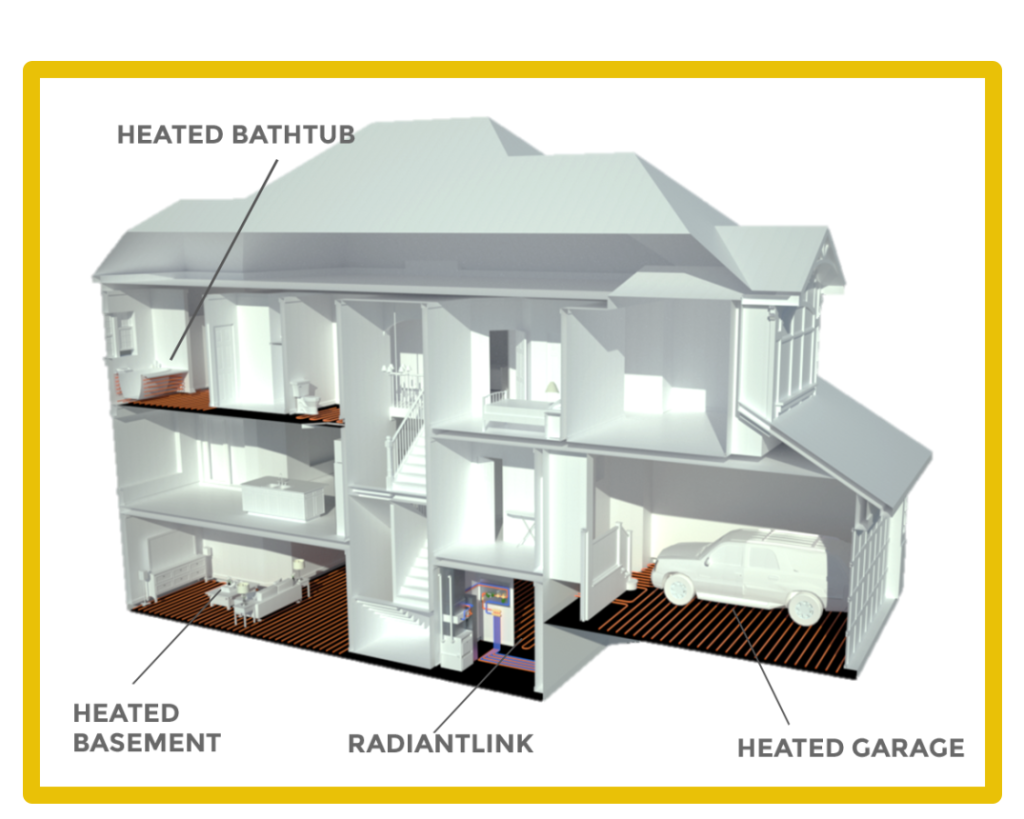
07 Feb Hydronic floor heating vs electric floor heating
Renovating your home or thinking of building – questions to ask about Electric Heated Floors or Hydronic Heated Floors.
Having the conversation about heated floors is a great place to start when thinking of renovating you home or building new. There are several options for you to consider, and at RadiantLink we want to share these options.
Radiant heating systems can be divided into two categories: hydronic systems and electric systems.

What is the difference between a hydronic system and an electric system?
Hydronic systems, which include the RadiantLink system and the boiler system, build warmth into your home by embedding pex piping into the floors or walls. Electric radiant floors work similar to an electric blanket. A thin layer of mesh containing electric resistance heating elements is imbedded in the tiled floor grout base.
The boiler system for infloor heating will give you the flexibility to control the temperature in each room. When discussing this option, it is important to have the conversation with your plumber about your requirements for ventilation and air-conditioning.
The RadiantLink system is a supplemental heating system using your furnace as the heat source that has the added feature of cooling your home during the hot summer months. It is important to ask your plumber about the cost to maintain your RadiantLink system. See our blog for cost of RadiantLink. How much does in-floor warming or radiant heating cost in Sk
The electric radiant floors are similar to the RadiantLink system in that they are a supplemental heating system. A question you might want to ask your plumber is, “do the mats installed have a life expectancy and how are they replaced?”.

What are the big pluses for each of the radiant floor warming systems?
The big plus for the boiler system is the quietness of system and the lack of dust. The big plus for the RadiantLink system is the ability to warm AND to cool your home–it is the only system on the market that can do both. And lastly, the big plus for the electric floor system is the easy installation. For more information about how heated/cooled concrete floors work check out our blog How Heated/Cooled Concrete Floors Work to Create “Hygge”
And the big big question – how much does radiant heating cost?
When renovating or building new, most decisions come down to “how much does it cost?”. The boiler system is a gorgeous system but it will be the most expensive to install and to maintain.
On average, an installed and operating RadiantLink system will cost $7000, depending on if you want your attached garage wrapped in warmth as well. RadiantLink is connected to the furnace which means you have the best system in terms of ventilation, heating, air conditioning, and infloor heating. In Saskatchewan, 70% of all homes have a furnace for a reason; low cost and ease of maintenance.
The electric floor system will be the least costly to install but will have the highest cost to operate. Furthermore, this system will have the heaviest carbon foot print. The environment does matter see our blog on 5 Ways In-floor heating can save the Planet
Have a conversation with your home builder or plumber about RadiantLink ability to heat and cool.
If this post helped you make your choice, please let us know. We would love to have a conversation with you! Contact: [email protected].



Sorry, the comment form is closed at this time.